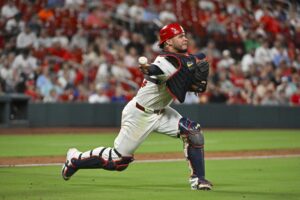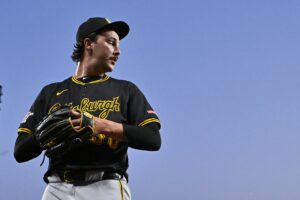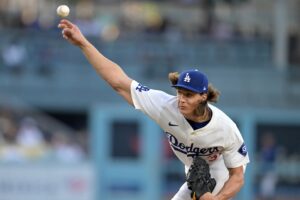After years of shifting strategies, another Atlanta Braves trade serves as evidence that roster flexibility is once again a top priority for team management.
On Saturday, the Braves traded super-utility player Sean Rodriguez to the Pittsburgh Pirates, acquiring minor league prospect Connor Joe in return. But it’s the enhanced payroll and roster flexibility they realize that signifies a continued strategic trend for a Braves front office which has made big moves in recent years.
Braves Trade of Sean Rodriguez Proves Roster Flexibility is Top Priority
The Braves signed Rodriguez, who had a breakout year with Pittsburgh in 2016, to be an everyday player at myriad positions in the infield and outfield. His season was delayed however by a devastating car accident prior to Spring Training which he and his family were fortunate to survive. He’s now healthy, so dealing him to gain roster flexibility seems counterintuitive. (Especially after his walk-off home run Sunday in his first game back with Pittsburgh vs. the San Diego Padres.) But viewed in context, it is a proof point of the continuing trend of asset fluidity emphasized by Braves management.
Since 2013, team President of Baseball Operations, John Hart, and General Manager, John “Coppy” Coppolella, have instituted a culture in which team transactions have a long shelf life and cannot be judged at face value at the moment of conception. Their administration has been marked by a slew of high-profile moves that saw the Braves trade the likes of Justin Upton, Craig Kimbrel, Jason Heyward, Andrelton Simmons and Evan Gattis. Each of these trades saw popular players depart, and, at the time, the Braves trade returns, to many fans, left much to be desired.
Not all the returns have matured, though some are starting to, and others have fed subsequent deals to keep the Braves ahead of the 8-ball. The trade for one year of Heyward’s service time famously landed Shelby Miller and Tyrell Jenkins from the St. Louis Cardinals, who were later dealt for four players – former No.1 draft pick Dansby Swanson, newly minted All-Star Ender Inciarte, pitching prospect Aaron Blair and reliever Luke Jackson – who have all graced the Braves roster this season. Simmons brought current starter Sean Newcomb to Atlanta along with Chris Ellis, who was later moved himself.
Houston Astros management were enamored enough with Gattis’ immense power to part with current Braves starter Mike Foltynewicz (10-6 this season after striking out 11 Marlins in a win Saturday) and third baseman Rio Ruiz. Two trades with the Padres saw Kimbrel and the Uptons (and Melvin’s horrific contract) leave town in exchange for current Braves pieces Max Fried (who was called up to the Majors Friday), Dustin Peterson and Jace Peterson, as well as fleet-footed outfielder Mallex Smith, who then was spun to Seattle in exchange for hard-throwing prospect Luiz Gohara, who is dealing at Triple-A Gwinnett and whom you may see in a Braves uniform before season’s end.
The trend toward roster flexibility continues into 2017. Rodriguez is the third major off-season signing the Braves have parted with this season. Left-handed starter Jaime Garcia was traded to the Minnesota Twins for a pitching prospect. Ageless wonder Bartolo Colon, who was signed away from the division rival New York Mets to a one-year deal, was released after struggling mightily through the season’s first half (though he pitched a complete game for his first win for Minnesota Friday).
Garcia’s trade was no surprise. The Braves made a low-risk buy on the oft-injured veteran in the off-season, sending three prospects (including Ellis) – who have made a grand total of one Major League appearance this season – to the Cardinals for one year of Garcia’s services at a palatable price. And though the Twins later flipped Garcia to the New York Yankees for a better haul, the Braves focused on the financial flexibility gained by his departure. Colon was similarly a low-risk acquisition – a $12 million stopgap for one season, whose trade value evaporated after going 2-8 with an 8.14 ERA and 1.78 WHIP in 13 starts for Atlanta, prompting his release.
In Rodriguez’s case, management deemed him expendable after recognizing the emergence of cheaper talent in Johan Camargo, the ascension of second-base prospect Ozzie Albies, the versatility of mid-season acquisition Danny Santana and the likes of minor leaguers Ronald Acuna, Travis Demeritte and even Swanson waiting in the wings. So when the Pirates claimed Rodriguez off waivers following the July 31 trade deadline, the Braves let him and his remaining $7.5 million in salary through 2018 go, with the acquisition of Joe an added bonus.
Team doctors initially thought Rodriguez’s injured shoulder would cost him an entire season, prompting the snap acquisition of second baseman Brandon Phillips from the Reds prior to Opening Day, another deal that had flexibility baked into it. The Braves picked up a respected veteran with local ties who is still capable of flashy defense and timely hitting for pennies on the dollar on a one-year deal. Phillips is an asset that could still be moved before season’s end. The acquisition of Matt Adams for middling prospects after Freddie Freeman broke his wrist may also prove to have future ROI if the slugger is dealt away.
The moves of the Hart-Coppolella era have been starkly distinct from the investment strategies of former General Manager, Frank Wren, or the big-budget “buy now” attitude Ted Turner’s teams exhibited in the 1990s.
For much of their dynastic 14-year run as National League East division champions from 1991 through 2015, the Braves proved they could annually replenish the roster to accommodate injuries, departures or declining production, or simply to add talent redundancies to already potent rosters.
The aggressive strategy came into the mainstream with the team’s acquisition of reigning Cy Young Award winner Greg Maddux in the 1992 off-season, to join talented hurlers Steve Avery, Tom Glavine and John Smoltz. Later additions like Denny Neagle, Tim Hudson and Russ Ortiz, as well as developed talent like Kevin Millwood, kept Atlanta’s pitching near the top of the league. Offense was also present in the Braves’ dealings, with high-profile acquisitions like Walt Weiss, Andrés Galarraga, Brian Jordan, Vinny Castilla, Gary Sheffield and J.D. Drew keeping the Braves current with competition around the league.
Wren also took a free-spending approach by signing the likes of Derek Lowe, Kenshin Kawakami, Billy Wagner, Ervin Santana and Melvin Upton and inking Dan Uggla to a big deal before his skills declined. He made a series of major trades throughout involving players like Uggla, Upton, Javier Vasquez and Jair Jurrjens, with the overwhelming majority of his moves focused on patching holes on the big-league roster. The moves had mixed results, though it was the failed long-term signings of Upton, Kawakami and Uggla and the pallid farm system he left behind that are the biggest blights on Wren’s tenure.
Near the end of his time with Atlanta, Wren did focus on locking up Atlanta’s young, talented core through lengthy contract extensions for Simmons, Kimbrel, Freeman and Julio Teheran. These moves set the table for Hart and Coppolella, who have moved the former two stars to fuel an era of roster flexibility established on the foundation of the latter two stars. For now, at least.
Main Photo
Embed from Getty Images






